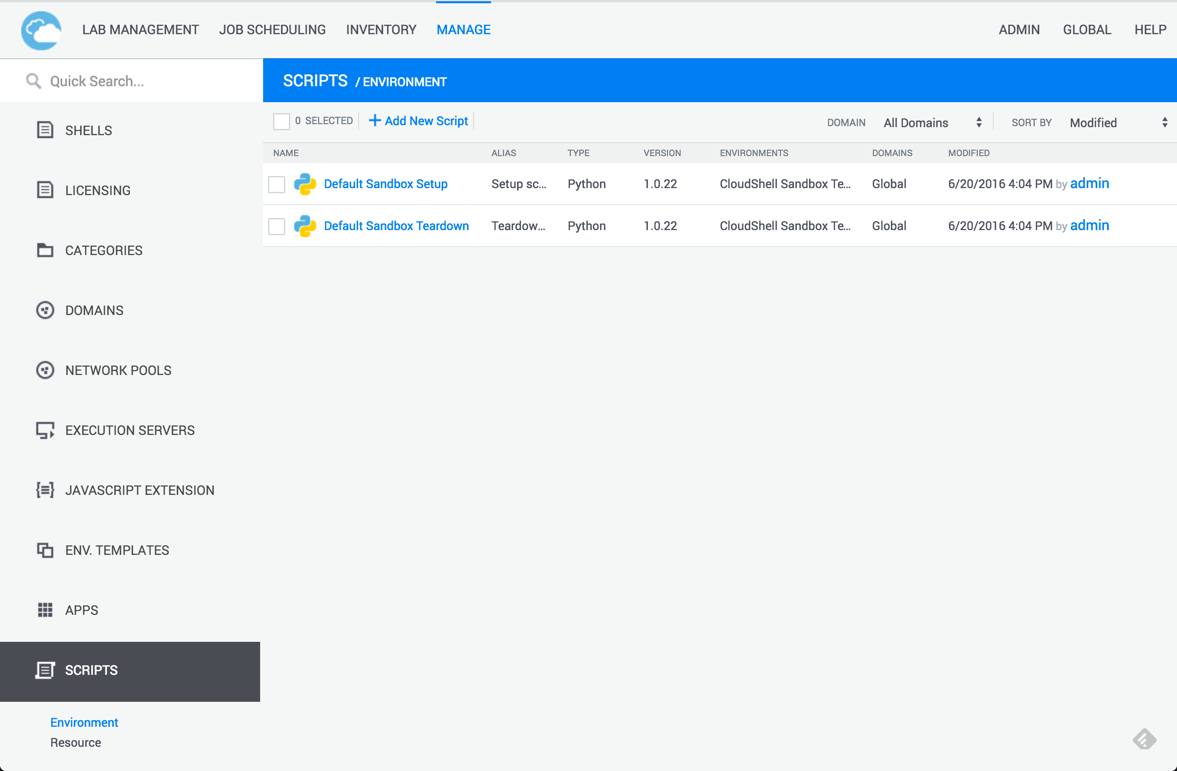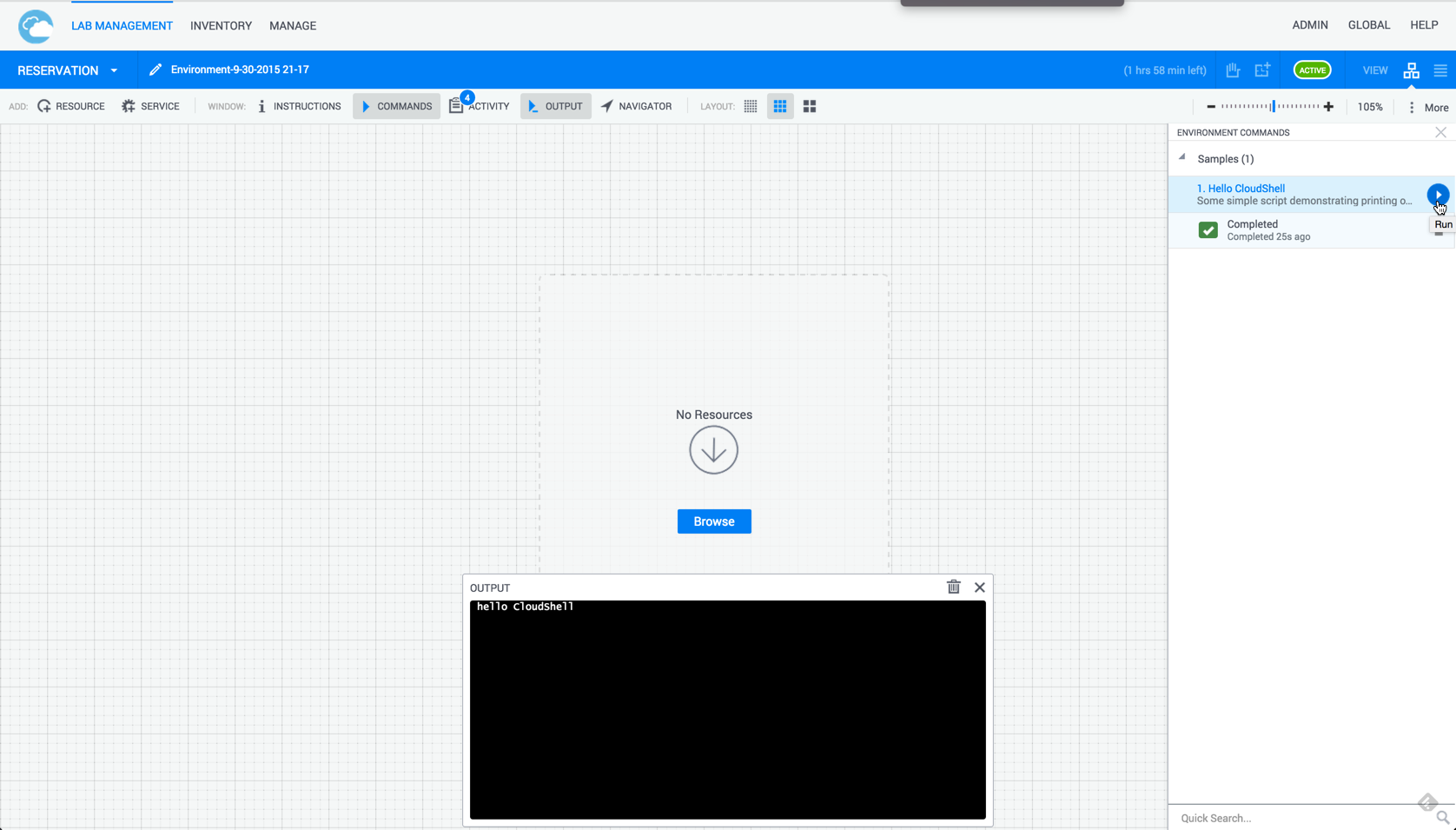Getting Started Suggest edits
Orchestration scripts can enable automating sandbox workflows. You can use orchestration scripts to create setup and teardown procedures as well as other custom workflows that can be made available in the sandbox. Examples would include saving and restoring state, starting test traffic, running a failover scenarios and more.
Creating a simple environment script
In your preferred IDE create a new Python file. For now we’ll want to keep its functionality very basic. Simply add some Python code to print ‘Hello CloudShell’. As a side note, in CloudShell the output of a script is displayed in the output widget in the sandbox workspace, so whatever you print in your script will find its way there.
print 'hello CloudShell'Save the file and give it any name, for example ‘hello.py’.
Uploading the orchestration script to CloudShell
In CloudShell portal, open the Manage dashboard. In the left sidebar, click Scripts and select the Environment option. The page should be similar to this:

Click the ‘Add New Script’ button to fill in some basic details on your script and upload it to CloudShell. For now, just provide a name for the script, click Browse to upload your script and finally hit click Save to seal the deal. Your script is now in CloudShell, all we need now is a blueprint where it can work its magic.
Attaching the script to an environment
Open the Lab Management dashboard and select Environments. Click Add New. A new environment will be created and you’ll be taken to the environment workspace.
Take a second to name your environment, you can do that by clicking on the name next to the pencil icon. Then click on the environment drop down menu to select Properties that is where we’ll connect our new script.
The last stop is the properties page. Here we’ll simply click the ‘Add Script’ button to assign our new script to the environment and click the ‘Update’ button at the bottom of the page. That’s it! Our script is ready to be used. However, in order to run it we’ll need to make our environment go live by creating a reservation. Click the ‘Reserve’ button to create a sandbox from the environment blueprint. Now, to run the script.
Executing the script on the sandbox.
Click the Commands button on the toolbar to open the environment commands side-pane. Click the ‘Play’ icon next to the command to launch it!
If the command executed successfully you should see a checkmark appear next to the command name and the output pane will display the command output.

In the scope of this simple tutorial, we’ve seen how to link a trivial Python script with a CloudShell environment. We’ll look into more concrete example and nuances in later sections of the guide.
 CloudShell Developer Guide
CloudShell Developer Guide